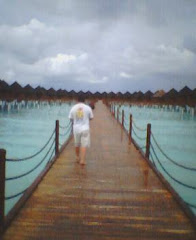最初に大森を探索したのは8年前でした。今回はもっと時間があって、ゆっくり大森を探索しました。やっぱりバスから降りると一番最初に見に行く場所は馬込文士村散策のみち。
The faces of the Magome Writer's Village included Japan's top writers and artists.
馬込文士村の住民。
Omori Station around 1919.
大正八年の大森駅風景。
Omori and the area around Sanno is where many of the writers and artists gathered to talk amongst each other.
「大森丘の会」は芸術家を中心とした集まり。山王周辺の芸術家や文士の社交場であった。
Many writers would gather at the home of Shiro Ozaki and his wife Chiyo Uno and was often called "Magome Station"
大崎士郎と宇野千代。二人が夫婦であった頃、彼らの人柄を慕う仲間で家の中はいつも賑わい、文士の話題が飛び校うので「馬込放送局」と呼ばれていた。
After the Great Kanto Earthquake, a new fad had begun. Dance halls became popular and the men and women started to wear western style clothes and also had their haircut in similar fashion. In 1921 (Taisho 10), mahjong become very popular and many mahjong cafes had opened. The writer, Kazuo Hirotsu also frequented the mahjong cafes.
People playing mahjong / 麻雀カフェの風景
The women of Magome Writer's Village such as Nobuko Yoshiya and Hideko Kawbata also cut their hair short and were called Modern Girls and shocked the residents of Magome Mura.
文士村の女性たちが相次いで断髪。モダンガールは馬込村の人々を驚かせた。
At the beginning of the Showa Era (mid-1920s), the next fad following mahjong cafes were dance parties.
During the Magome Writer's Village era, it was also an era where women were quite active. From left to write are: Hiroko Katayama, Chiyo Uno, Hanako Muraoka, Nobuko Yoshiya, and Ineko Sata.
馬込文士村時代、それは女性活躍の時代でもあった。左から;片山広子、宇野千代、村岡花子、吉屋信子、と佐多稲子。
In the year 1931 (Showa 6), among the writers, sumo became a subject of much discussion. The Omori Sumo Association was created. The sumo dohyo (ring) was made at the back of the Ikegami Honmon-ji Temple where sumo bouts were held.
Sumo tournament / 相撲大会
We decided to check out the Tenso Shrine which was at the top of the hill where the Bunshi Mura Writer's Street was.
文士村のみちの丘の上に天相神社にお参りました。
Before reaching the top of the stairs, I also stopped here at the Fushimi Inari Shrine.
階段を上がる途中伏見稲荷神社にもお参りました。
Hand Purification Basin / 手水舎
Hondo / 本堂
I love Japan with its mix of churches, temples and shrines. Old and new, Western and Japanese style. Definitely never a boring moment when going out for a walk. This is the Omori Fukko Church and Sanno Community Church.
やっぱり日本が好き。お寺と神社の近くに教会とかあって、素晴らしい。古い建物がモダーンの建物で立ち並ぶのが最高。東京散歩は退屈にはなりませんね。ここは大森福興教会、山王コミュニティ・チャーチ、城の教会。
A piece of art explaining the plant around it.
これもアートだ。ここに咲く花の説明が書いてある。
Local scenery in Omori / 大森の風景
Omori Shopping Mall [Milpa] / 大森商店街 「ミルパ」
Omori Otori Jinja / 大森鳳神社
So, do you think the ramen shop is out of business as the sign is not only upside down but backwards as well?
さ、このラーメン屋はも潰れてると思いますか?看板が逆さまになっている。
Public art / パブリックアート
More public art / これもパブリックアート
We took a short break for lunch but as always, food posts will be separate. But just in case you wanted to know, we had lunch at a Big Boy restaurant. Yes, they still have those in Japan.
これから昼食を食べましたが、食べ物ネタはまた別に書く。気になる人は、私たちが今日行った店はハンバーグチェイン店の「ビッグ・ボイ」。まだ日本にあるのはびっくりしました。
We came upon another shrine after lunch so of course we had to explore. This is the Omori Sanno Hie Shrine.
ランチを食べ終えたら再び散歩開始。また知らない神社を発見。もちろん探索しましたよ。ここは大森山王日枝神社。
Hondo / 本堂
Sanno Inari Shrine / 山王稲荷神社
Sanno Inari Shrine / 山王稲荷神社
Hie Shrine / 日枝神社
We didn't stop in here but this is the entrance to Naritasan Enno-ji Temple.
ここは行ってにが、成田山園能寺。
And then we came upon another interesting site. Also one of Shinagawa Ward's 100 Scenic Sites. We stopped by the Omori-kaizuka Shell Mounds
散歩が続いたら、また面白い場所を発見。ここも品川区百景に選ばれてる場所。みつかたのは大森貝塚遺跡庭園。
Okay, so its mostly a public park.
はい、まだ普通の公園にしあ見えない。
Statue of Edward S. Morse.
モース博士像。
So, who was Edward S. Morse. He was the American man and professor who first discovered the shell mounds in Omori and is also the site for the first joint scientific investigation of the end of the Jomon Era. Shinagawa Ward became a sister city to Morse's place of birth - Portland, Maine in the United States.
品川区・ポートランド市姉妹都市提携記念。
The shell mounds are a time capsule for the Jomon Era.
貝塚は縄文時代のタイムカプセルだ。
Oh no, I've also become a trainspotter!
あっ、やばい!鉄道マニアになってる。電車発見。
We then left the shell mounds and stumbled upon yet another one of Shingawa Ward's 100 Scenic Sites. We stopped by the Kashima Shrine.
貝塚を去ったあと、また品川区百景の一つに遭遇。こんどは鹿島神社です。
Entrance to Kashima Shrine / 鹿島神社の入口
Cats always seem to be welcome on temple or shrine grounds.
お寺や神社の境内に猫がいつも居る感じがする。
3 Stone Statues / 来迎院石造念仏講供養塔 三基
Our last stop on today's walk was this tea house called the Shotekian.
散歩の最後に行った場所は茶屋の松滴庵。
Suikinkutsu / 水琴窟
In case you don't know what a suikinkutsu is, it is a feature of a garden in which a buried earthen jar that makes sound when water drips into it.
水琴窟とは、小さな洞窟に水滴を落とし、かめの中で反響する水音を楽しむもの。
Foundation for an old style house / 竪穴住居跡
Guest at the tea house / 茶屋のお客様
It was quite an all day adventure but well worth it. You always find new things when you walk around unfamiliar neighborhoods.
楽しい冒険でした。やっぱり散歩するとなんかの出会いや発見がある。特に知らない場所を歩きまわるのもおすすめします。
























































































.jpg)



No comments:
Post a Comment